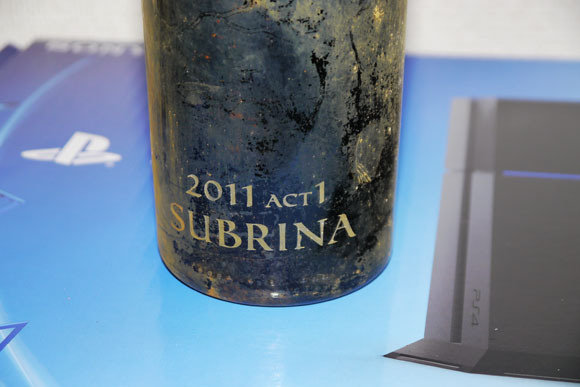
While Japan’s most iconic alcoholic beverage is the indigenous brew known abroad as sake (and as nihonshu at home), there are Japanese winemakers as well. Many are located in Yamanashi Prefecture, where local wineries hold an annual festival which we visited this past fall.
However, the last bottle of vino we enjoyed didn’t age in the mountains of Yamanashi, or the highlands of any other Japanese prefecture for that matter. Instead, our most recently purchased wine spent seven months aging at the bottom of the sea.
Technically, the wine called Subrina is a bit of an international collaboration. The shiraz grapes used in its production grow well in warm, dry climes such as South Africa, which is where the wine is initially produced.
After bottling, the wine is shipped to the town of Minami Izu-cho in Japan’s Shizuoka Prefecture. Minami Izu-cho sits the stretch of coastline known as Cape Oku Irozaki, and shortly after their arrival in Japan the bottles are loaded onto pallets and banished to the bottom of the abyss.
There the Subrina sits, maturing in its unique environment. Divers come to check on its progress once every two months, and after seven months’ time, the wine is hauled back to the surface and sold to the thirsty and curious.
The bottles are stacked as they age beneath the surface of the sea, and it’s said that even these slight differences in depth cause subtle differences in flavor. Subrina is sold in three different varieties, with the white C Type aging closest to the surface, the red B Type below, and the red A Type at the very bottom.
Despite its 12,000 yen (US $120) price tag being a 2,000 yen premium over the others, we decided to order a bottle of A Type. After all, why settle for wine that was almost aged on the seafloor, when for just a little more you can have the genuine article? Since we didn’t have the proper scuba gear to pick up our wine in person, we had it delivered.
There are stories of customers unboxing their Subrina to find the bottle covered with algae or barnacles. We didn’t have anything quite so dramatic on ours, but its appearance still made where it had spent the last 28 weeks immediately evident.
The neck of the bottle is covered with a thick wax seal. We’re sure our local wine shop could sell us a sophisticated tool for removing it, but since the bottle already looked like something you’d bring to a pirate Christmas party, we decided to hack it off with a knife.
▼ Arrrrr!
With that taken care of, we popped the cork, and the wine’s intense aroma filled the room as we poured a glass.
We took a sip, and were immediately satisfied with our purchase. The Subrina A Type has excellent presence and mouth feel, with tannins that are noticeable, but not in any way overpowering. If you’ll pardon the pun, we’d describe them, and the flavor, as deep.
If there was one shortcoming to our experience, it was that sipping our first glass of submarine wine made us really want a nice steak to pair with it. Unfortunately though, due to the Subrina A Type’s less than economical price, that wasn’t quite in the budget, but the great thing about good red wine is that somewhere around the third glass, we’d forgotten all about our disappointment over not having any high-grade beef.
▼ And by the fourth glass, we’d stopped caring about the fact that we didn’t even own a proper table.
Related: Subrina
Top image: RocketNews24
Insert images: Subrina, RocketNews24
[ Read in Japanese ]